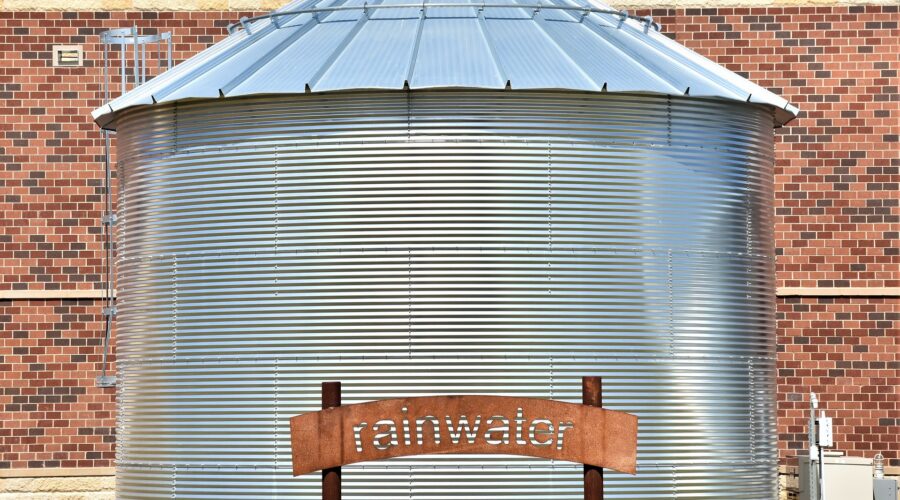ISO 46001:2019 Water efficiency management systems — Requirements with guidance for use specifies requirements and guidance on the establishment, implementation, and maintenance of a water efficiency management system. It is applicable to all types and sizes of organization that use water. The focus is, therefore, end users and not water companies.
According to ISO, the standard is applicable to any organization that intends to:
- achieve the efficient use of water through reduce, replace or reuse;
- establish, implement, and maintain water efficiency;
- continually improve water efficiency.
ISO 46001 specifies requirements for monitoring, measurement, documentation, reporting, design and procurement practices for equipment, systems, processes, and training of personnel that contribute to the management of water efficiency.
What does it cover?
| Introduction |
| 1 Scope |
| 2 Normative references |
| 3 Terms and definitions |
| 4 Context of the organization |
| 4.1 Understanding the organization and its context |
| 4.2 Understanding the needs and expectations of interested parties |
| 4.3 Determining the scope of the water efficiency management system |
| 4.4 Water efficiency management system |
| 5 Leadership |
| 5.1 Leadership and commitment |
| 5.2 Policy |
| 5.3 Organizational roles, responsibilities and authorities |
| 6 Planning |
| 6.1 Actions to address risks and opportunities |
| 6.2 Water efficiency objectives and planning to achieve them |
| 6.3 Targets and action plans |
| 7 Support |
| 7.1 Resources |
| 7.2 Competence |
| 7.3 Awareness |
| 7.4 Communication |
| 7.5 Documented information |
| 8 Operation |
| 8.1 Operational planning and control |
| 8.2 Design |
| 8.3 Procurement of water services, products and equipment |
| 8.4 Maintenance and inspection |
| 9 Performance evaluation |
| 9.1 Monitoring, measurement, analysis and evaluation |
| 9.2 Internal audit |
| 9.3 Management review |
| 10 Improvement |
| 10.1 Nonconformity and corrective action |
| 10.2 Continual improvement |
| Annex A Guidance on the use of this document |
| A.1 General |
| A.2 Understanding of the organization and its context |
| A.3 Identification and engagement of interested parties |
| A.4 Leadership and commitment |
| A.5 Policy |
| A.6 Organizational roles, responsibilities and authorities |
| A.7 Water efficiency management planning |
| A.8 Support |
| A.9 Documented information |
| A.10 Operation planning and control |
| A.11 Procurement of water services, products, equipment and water |
| A.12 Monitoring, measurement, analysis and evaluation |
| A.13 Internal audit of a water efficiency management system |
| A.14 Management review |
| A.15 Nonconformity and corrective action |
| Annex B Examples of water efficiency scenarios |
| B.1 Case 1 — Optimization of manufacturing processes |
| B.2 Case 2 — Reduction in pollutant load via segregation |
| B.3 Case 3 — Recycling of process water |
| B.4 Case 4 — Recycling of non-process water |
| B.5 Case 5 — Use of alternative water |
| B.6 Case 6 — Use of water-efficient fittings, apparatus, appliances and products |
| B.7 Case 7 — Optimization of cooling tower operations |
| B.8 Case 8 — Climate-controlled smart irrigation installations |
| Annex C Guidance on the development of a water balance chart |
| Annex D Examples of business activity indicators |
Implementation
Implementing a water efficiency management system in an organization in accordance with ISO 46001 involves several key steps.
Leadership and Commitment
- Demonstrate leadership commitment to water efficiency within the organization.
- Establish a water efficiency policy that aligns with organizational goals.
Scope and Context
- Determine the scope of the water efficiency management system.
- Understand the internal and external context, including water-related risks and opportunities.
Legal and Regulatory Compliance
- Identify and comply with relevant legal and regulatory requirements related to water efficiency.
- Stay informed about changes in water-related legislation.
Water Efficiency Policy
Develop a water efficiency policy that outlines the organization’s commitment to water conservation and efficiency.
Water Use Assessment
- Conduct a comprehensive assessment of water use within the organization.
- Identify areas where water efficiency improvements can be made.
Water Efficiency Objectives and Targets
- Establish measurable water efficiency objectives and targets.
- Set goals for reducing water consumption and improving water efficiency.
Action Plans and Programs
- Develop action plans and programs to achieve water efficiency objectives.
- Allocate resources and responsibilities for implementing these plans.
Monitoring and Measurement
- Implement systems for monitoring and measuring water use.
- Track progress against water efficiency objectives and targets.
Data Analysis and Reporting
- Analyze water use data to identify trends, areas for improvement, and opportunities.
- Prepare regular reports on water efficiency performance.
Employee Training and Awareness
- Provide training to employees on water efficiency practices.
- Raise awareness about the importance of water conservation throughout the organization.
Technology and Infrastructure
- Implement water-efficient technologies and infrastructure.
- Upgrade existing systems to reduce water waste.
Water Risk Management
- Identify and assess water-related risks, including scarcity, quality, and availability.
- Develop strategies to manage and mitigate these risks.
Communication and Stakeholder Engagement
- Communicate water efficiency initiatives to stakeholders.
- Engage with external partners, communities, and customers on water conservation efforts.
Continual Improvement
- Establish processes for continual improvement of water efficiency initiatives.
- Regularly review performance, learn from experiences, and adapt strategies accordingly.
Emergency Preparedness
- Develop plans for water-related emergencies, such as shortages or contamination.
- Ensure the organization is prepared to respond effectively.
Audit and Certification
- Conduct internal audits to assess conformity with ISO 46001.
- Consider third-party certification to demonstrate conformity with the standard.
Documentation and Record-Keeping
- Develop and maintain documentation on the management of water efficiency.
- Keep records of water use, efficiency measures, and improvements.
In conclusion…
It is important to note that water efficiency is a critical aspect of sustainable resource management. The organization should adapt its practices to evolving circumstances.
ISO 46001 can be purchased through the ISO.org website.














Comments (0)